Home › Forums › Chat Forum › Decking Planning help
- This topic has 31 replies, 16 voices, and was last updated 1 year ago by FB-ATB.
-
Decking Planning help
-
bruceandhisbonusFree MemberPosted 1 year ago
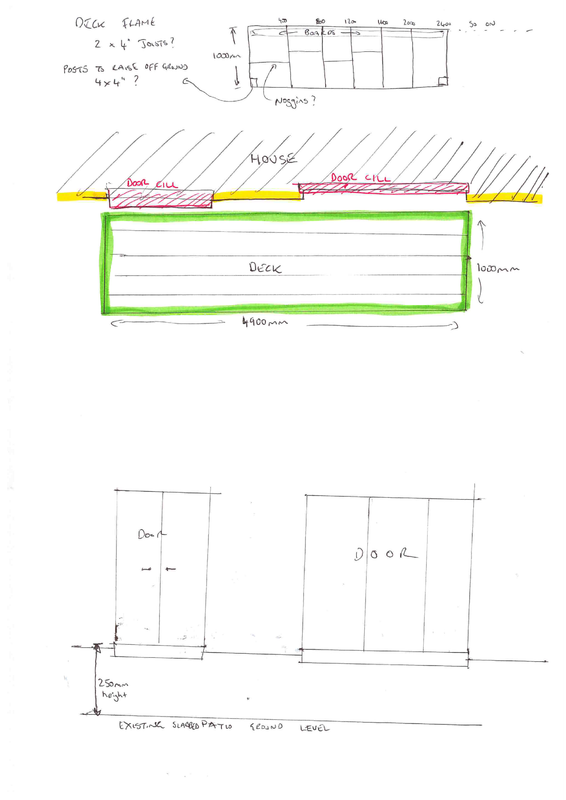
I am going to be building a decking step/platform outside my newly(ish) installed back doors.
See attached – it’s going to be approx. 4.8 x 1.0m.
My main question is how do I attach this to the house? Unfortunately the door cills are not flush with the exterior walls of the house so a long joist screwed on to make a ledger board isn’t going to work easily. Do I make the deck a complete standalone rectangular frame and then attach that directly to the concrete door cill protruding out? I can also attach it to the house and longer recessed door cill using spacers/packers I guess.
I plan to raise it to 250mm using posts sitting directly on the existing paved patio area. Should these have anything underneath them to keep the wood off the ground?
To lay the deck boards length ways, I was going to use two long joists length ways and then several joists width ways. I assume noggins in the middle length ways will help with strength here. I’ve not yet considered how many posts I will need or their placement.
Any advice would be greatly appreciated! Thanks.
FB-ATBFull MemberPosted 1 year agoYes to noggins for rigidity.
Not sure I follow re the cills/ledger board issue. Depending on the height of the cill, by the time you’ve laid a deckboard on the ledgerboard would that not be at/near cill height? Could you then cut out the first deckboard so it shapes around the 2 doors?
If you attach a joist to the wall, don’t have the screws along the centre of the joist but alternate hi/low to help stop any warping.
Don’t forget to have a slight slope to allow for water run off.
Probably don’t want to have the posts sitting on the existing patio in case water pools & the end up sitting in water. However, I’d like to have them secured/ a section concreted underground for stability.
thenorthwindFull MemberPosted 1 year agoProbably don’t want to have the posts sitting on the existing patio in case water pools & the end up sitting in water.
Maybe stick a pair of bricks or a small flagstone between the posts and existing patio to largely prevent this.
theotherjonvFree MemberPosted 1 year agoI’d be tempted to take up appropriate slabs and postcrete the posts in but if you do put them down on the patio underneath, put DPM under them and staple the excess up around the post so they aren’t directly in contact with the ground.
Maybe also lift some of the non-load bearing slabs so that any rain through the deck can then soak to ground rather than sit around the posts.
Mine was laid directly onto the patio underneath using the same technique, I left a grid of slabs for the deck to sit on and then DPM between the slabs and the joists, my deck is 5.4 x 3.6 approx.
Maybe instead of the posts to sit on, could you use postcrete or similar to create padstones raised from the deck? Looking at the size a 2×4 grid, maybe 2×5 would be enough to sit on?
bruceandhisbonusFree MemberPosted 1 year agoThanks for the tips so far.
My issue with attaching to the house is due to the door cills not being flush with the wall. One is protruding a bit and one is recessed a bit so I don’t have a straight run to attach a ledger board. That’s why I am thinking I should maybe build a standalone raised deck and attach it to the house at a couple of points.
I might lift up a few slabs that aren’t needed and put the posts on top of them to keep them out of any pooling water.
Or there are products like this to avoid using wooden posts. It might get expensive though!
decking risers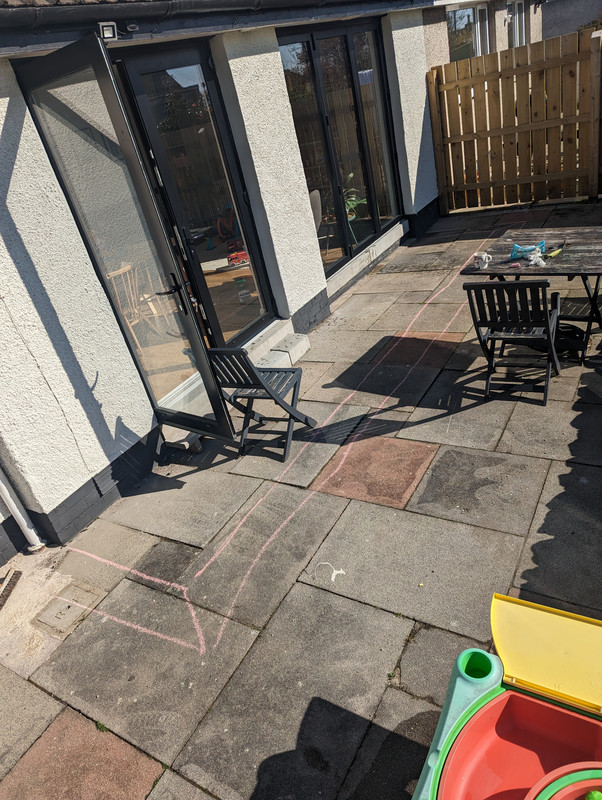 dmortsFull MemberPosted 1 year ago
dmortsFull MemberPosted 1 year agoYou should consider where run off and splash back of rain will go. If you were building a raised patio the guidance is that the patio should be 150mm below the DPC and run off away from the building (obviously)
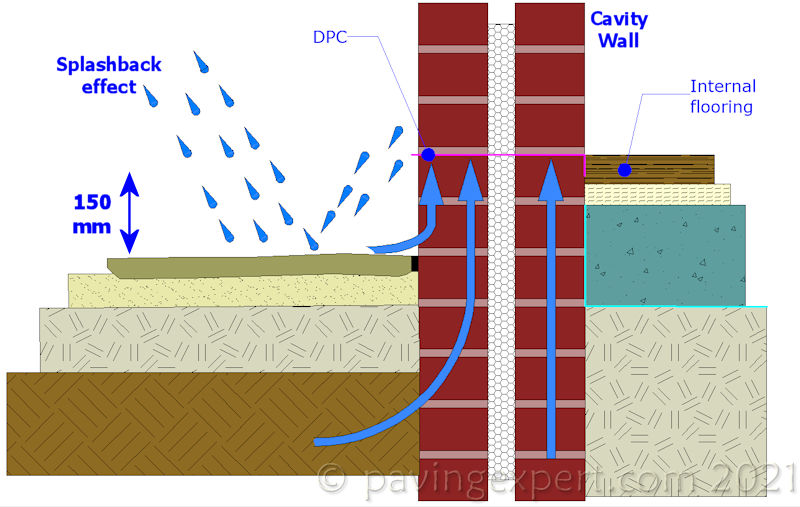
https://www.pavingexpert.com/dpc01I don’t see any reason why this doesn’t also apply to decking. Overall the guidance for decking in the UK is poor. Our deck is spaced about 200mm, maybe more, from the wall. It’s a white rendered wall and there’s no sign of rain splashing back on it (usually there’s a tide mark of dirt)
Your joist spacing of 400mm should mean it’s solid underfoot. That’s what I settled on for mine after looking into it (also found out 600mm spacing is nonsense)
Edit: now seeing your picture, the section of wall that might be affected by splash back is small, the doors won’t have the same concern
leffeboyFull MemberPosted 1 year agoI would do anything you can to get the bottom of the posts up off of the ground. If you postcrete them in they will rot and be a real pita to replace. Those deck risers might be expensive but it looks like quite a nice solution. Things are often only expensive if you count your own time as zero cost.
edit: also, there isn’t any body marked up on that plan you made. Standards are slipping 🙁
FB-ATBFull MemberPosted 1 year agoI didn’t twig the height of 250mm- thought the sketch was to scale with a big drop to the floor. At 250mm most of the height would be taken by the height of the joist & deckboard. As mentioned above, some padstones/extra paving slabs under the frame may do the job.
Looking at the photo, at 1m wide what does the deck add? As you step from inside, your first foot will land on the decking & the next down onto the patio.
1thenorthwindFull MemberPosted 1 year agobut if you do put them down on the patio underneath, put DPM under them and staple the excess up around the post so they aren’t directly in contact with the ground.
What, make a nice little container around them to hold the rainwater?
HazeFull MemberPosted 1 year ago@dmorts not sure if it applies to decking as it may be considered a temporary structure.
I was considering packing the substructute with plastic shims to keep it from sitting on wet pavers.
mertFree MemberPosted 1 year agoLooking at the photo, at 1m wide what does the deck add? As you step from inside, your first foot will land on the decking & the next down onto the patio.
That was my first thought, at 1m wide, all there is going to be space for is a bench to sit on and look at the garden, and with the doors like that, i doubt you’ve even got room.
My small temporary deck (ha!) that i knocked up in a (long) day was 4x3m, so big enough for table, chairs and a bbq and room to walk around them all when fully occupied, you might not need that much space, but 1m wide is *really* narrow.
(current deck is nearly 50sqm, and almost square.)1timbaFree MemberPosted 1 year ago+1
I think that you’d be better building a couple of brick/block/paver steps at each door and make them a feature, e.g segment shapes because a semi-circle might be too much. Separate steps will accommodate the building line better tooWood can be a PITA; it moves, it rots, it needs treating, it gets more slippery than hard paving and the space underneath becomes a haven for pests
thenorthwindFull MemberPosted 1 year agonot sure if it applies to decking as it may be considered a temporary structure.
The guidance is there to stop you making your walls damp, not a hoop to jump through for planning. AFAIK your proposal is well within permitted development regulations (I’m not up to date on this though).
I was considering packing the substructute with plastic shims to keep it from sitting on wet pavers.
I think that’s not a bad idea. I think allowing water to drain away is much less likely to cause trouble than trying to keep it out, and end up keeping it in instead, as per theotherjonv’s suggestion.
dmortsFull MemberPosted 1 year ago@dmorts not sure if it applies to decking as it may be considered a temporary structure
That’s not really the point. The rain doesn’t care if the structure is temporary or not. It is a solid surface that the rain could still splash off and run off the same.
There’s reasoning behind the regs/guidance for the distances given
2futonrivercrossingFree MemberPosted 1 year agoA 1m wide deck in that situation looks like a waste of time 🤷♂️
1dmortsFull MemberPosted 1 year agoAs others have said, a stone step onto of the existing slabs would be better suited to this, and probably easier to install
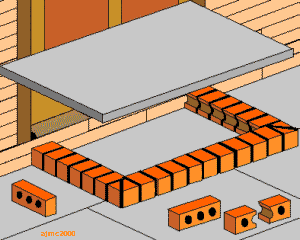
Paving Expert explains it here https://www.pavingexpert.com/featur01
Scroll down to “Flag and Brick Doorsteps”bruceandhisbonusFree MemberPosted 1 year agoI get what everyone is saying regarding the narrow width. We need a step as there is currently not one yet since the doors went in (they were previously windows). Minimum depth has to be 900mm I think for going in and out a door. I thought a decking platform would make a nice alternative to a concrete step and would look better if it stretched across the both sets of doors. It would be used as a step rather than a platform for sitting on.
I will discuss with the wife to make sure she would prefer a decking step rather than some sort of concrete/stone. I think I would have to get a builder in to do a stone step as it appears more difficult to me than cutting some wood. I could be wrong though!
theotherjonvFree MemberPosted 1 year agoI was advised the same, about a suitable gap / drop from the DP course, as ‘good practise’
Still not sure how much wetter the wall gets from bounceback vs it raining on the wall………
FB-ATBFull MemberPosted 1 year agoLooks like you’ve got the start of a stone based step with those blocks on their sides under the single door. Could you bed a set of them onto the patio over the area you want to cover and top with pavers?
nickjbFree MemberPosted 1 year agoI think I would have to get a builder in to do a stone step as it appears more difficult to me than cutting some wood. I could be wrong though!
Its actually a pretty straightforward job for a competent DIYer. Might take you longer than a pro but you can get a good finish. It’ll also be a lot less work than decking in the long term
thepuristFull MemberPosted 1 year agoAnother vote for some proper masonry steps rather than decking – I’d lift the slabs rather than build on top of them too as you don’t know what half arsed jim crackery lies underneath. I’d also go for a single step that spans the width of the rear, and I’d be tempted to set them so there are even steps from house to patio – if you go 150 below DPC the 2nd step down would be smaller so they would be a bit less comfortable to use.
stumpyjonFull MemberPosted 1 year agoI’d use breeze blocks flat with the joists sitting on top. That’s how my decking works and is 20 years old. Think I put a strip of damp proof plastic between the joists and blocks. Slightly more work to lay the blocks but a lot less rafting in the long run than putting in posts.
spooky_b329Full MemberPosted 1 year agoMy vote goes to a brick/slab step.
I think a section of decking as you describe will just feel a bit flimsy, look a bit temporary, and will go green and slippery without maintenance.
1bruceandhisbonusFree MemberPosted 1 year agoAn update. I took some of your advice and ditched the stupid initial idea of a 1m wide decking platform to form a back step. I suggested stone steps as the best (most cost effective) option but was outvoted 1 to 1! We wanted the outside space to have the same floor level as the inside so decided just to deck the whole area outside the back doors. Really happy with how it has turned out. Hopefully with a bit of care it’s going to last a decent amount of time!
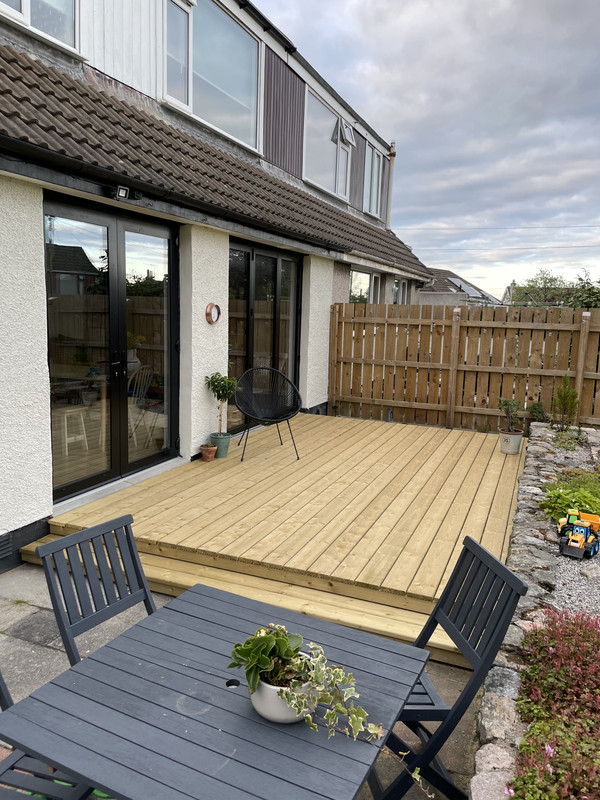 thenorthwindFull MemberPosted 1 year ago
thenorthwindFull MemberPosted 1 year agoLooks really nice!
Is it me, or have you put the decking boards “upside down”, i.e. with the grooves on the bottom? I presume that was deliberate?
bruceandhisbonusFree MemberPosted 1 year agoIs it me, or have you put the decking boards “upside down”, i.e. with the grooves on the bottom?
I’d argue I’ve laid them the correct way! It seems to be a rather long debate across the interweb. We wanted a smooth finish and this also ensures we don’t have grooves filling with water and dirt.
thenorthwindFull MemberPosted 1 year agoI didn’t realise it was so controversial! I can see why you’d do it that way, it looks better and I’m not sure if the grooves actually help with grip.
johndohFree MemberPosted 1 year agoWe laid our decking that way around to match the finish of the planed wood fencing that surrounds it.
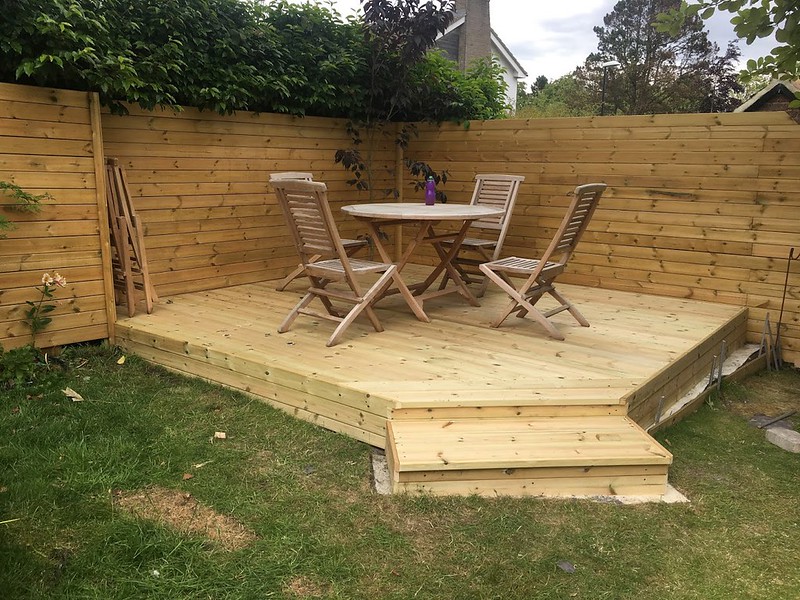 FB-ATBFull MemberPosted 1 year ago
FB-ATBFull MemberPosted 1 year agoIf you’re walking at right angles to the grooves, I find they give grip but can be slippy walking along them. Ok for a walkway where you’d be going in one direction, but on a deck you can be going across & along. You can buy grip strips to put in grooves but gets quite ££ even when only putting the strips every 5th or 6th groove.
You must be logged in to reply to this topic.

